- Home
- Kathy Reichs
Monday Mourning Page 6
Monday Mourning Read online
Page 6
Crunching cornflakes, I considered the problem.
At this point I knew 38426 and 38427 had come from shallow graves in a dry basement. The skeletons were devoid of flesh but well preserved, with no surface cracking or flaking.
Mental checklist. What other data are useful for pinpointing PMI with dry bones?
Deterioration of associated materials. I had none.
Analysis of insect inclusions. I had none.
Bird nosed toward my cereal, hoping to score milk. I displaced him to a chair.
Should I move on to 38428, or should I focus on establishing PMI?
Birdie oozed back onto the table. Again, I lifted him down.
If I found evidence that the burials were old, I could relax and notify the archaeologists. On the other hand, if I found evidence that the deaths were recent, as I suspected, the coroner would insist on an investigation, and Claudel would have no choice. He and Charbonneau could start the legwork while I analyzed the third set of remains.
As I poured coffee, Birdie launched a third sortie. I relocated him again, somewhat less gently.
OK. I had no artifacts or bugs. What options did that leave?
I knew that the elemental composition of bone changes over time. The amount of nitrogen decreases, the amount of fluoride increases. But these shifts are too slow to be of use in evaluating the age of modern remains.
I’d read studies that focused on radiography, histology, chemical reaction, and isotope content. I was aware of research that pointed to amino acids as useful in distinguishing recent from ancient bone.
But a myriad of factors influence biochemical and physical processes. Temperature. Ground moisture. Oxygen tension. Microbial activity. Soil pH. No technique is reliably accurate. Once the flesh and bugs move on, PMI becomes the Bermuda Triangle of forensic anthropology.
I could think of only one test that might yield definitive results. But it would take time and cost money, and only a handful of labs performed it. Given the current financial climate, I knew it would be a hard sell to LaManche.
But it was worth a shot.
Placing my bowl on the floor, I gathered my purse and laptop and set off.
In my office, the message light remained obstinately dark.
The morning meeting was routine. A man dead of fumes from a malfunctioning space heater. An alcohol-related traffic death. An autoerotic with a faulty escape knot in his noose. A charred body in a burned-out motor home.
Pelletier caught the fire victim. Though the remains were thought to be those of the trailer’s owner, he asked that I be available in case things got dicey.
As the others filed out, I turned to LaManche.
“May I speak with you a moment?”
“Mais, oui.” LaManche folded back into his seat.
“I’ve examined two of the skeletons from the pizza parlor basement.”
When LaManche raised his brows, the lines in his flesh elongated and deepened. He seemed suddenly older, more worn than I remembered. Was it the cold morning light from the windows behind me? Was LaManche unwell? Had I simply not noticed until this moment?
“The two victims I’ve examined are young and female,” I said. “I’m certain the third is a young woman as well.”
“You use the word ‘victim.’”
“They’re kids and they’re dead.”
LaManche’s melancholy eyes did not flinch at my sharpness.
“But I’ve found no signs of violence,” I admitted.
“Monsieur Claudel feels these remains are probably not recent.”
“The restaurant owner found buttons that could be nineteenth century.”
“Could be?” The brows rose again.
“Claudel took them to the McCord.”
“You are unconvinced?”
“Even if the buttons are genuine, it’s unclear whether they were associated with any of the skeletons. Their presence in the basement could have any number of explanations.”
LaManche sighed and pulled his ear. “Monsieur Claudel also told me that the building is more than a hundred years old.”
“Claudel has researched the property?” I felt heat flush my face. “He has not shared that information with me.”
“Construction took place over a century ago.”
I have a flash point temper. My father’s temper. Along with drink, Daddy’s fury sometimes ruled him. I grew up with the impact of those outbursts.
Like Daddy, I succumbed to the lure of the bottle. Unlike him, I walked away from booze. Also unlike him, I learned to control my temper. When fire simmers inside, outside I grow deadly calm.
“Did Monsieur Claudel not realize that such information is relevant to my task?” I asked, my voice glacial.
“I am certain he will inform you in detail.”
“During my lifetime?”
“Do not grow defensive. I am not fighting you.”
I drew a deep breath.
“There is one test which might resolve the question.”
“Tell me.”
“You’ve heard of Carbon 14 dating?”
“I know it is used to assign age to organic materials, including human bone. I do not know how it works.”
“Radiocarbon, or Carbon 14, is an unstable isotope. Like all radioactive substances, it decays by releasing subatomic particles at a uniform rate.”
LaManche’s eyes stayed heavy on mine.
“In about 5,730 years half of a population of radiocarbon atoms will have reverted to nitrogen.”
“That is the half-life.”
I nodded. “After 11,460 years, a fourth of the original amount of radiocarbon remains. After another 5,730 years, only an eighth remains, and so on.”
LaManche did not interrupt.
“The amount of radiocarbon in the atmosphere is really tiny. There’s only about one radiocarbon atom for every trillion stable carbon atoms. Radiocarbon is constantly being created in the upper atmosphere by cosmic bombardment of nitrogen. Some of the nitrogen converts to radiocarbon, which immediately oxidizes to CO2. That CO2 works its way down into the biosphere, where it’s taken up by plants. Since humans, animals, and plants comprise the same food chain, as long as they are alive they have a constant amount of radiocarbon in them. The actual amount is gradually decreasing due to radioactive decay, but is being replenished through food intake, or through photosynthesis in the case of plants. This equilibrium exists as long as an organism is alive. When it dies, decay becomes the only active process. Radiocarbon dating is a method that determines the point in time at which this disequilibrium started.”
LaManche raised both palms in a gesture of skepticism. “Five-thousand-plus years. How can such a slow process be of value with recent remains?”
“A fair question. It’s true that Carbon 14 dating has been used primarily by archaeologists, and has been shown to be quite reliable. But the technique is based on a number of assumptions, one of which is that the atmospheric level of radiocarbon has remained constant over time. Data inconsistent with that assumption can actually be used to give the process wider applicability.”
“How so?”
“That’s where it gets interesting. Studies have documented significant anomalies in radiocarbon data for certain time periods. Two perturbations have taken place over the past eighty years, both of which were caused by human activity.”
LaManche leaned back, interlaced his fingers, and laid his hands on his chest. A hint for brevity? I did some mental abridgment.
“The period from about 1910 to 1950 is characterized by a decrease of atmospheric radiocarbon, probably due to the release into the atmosphere of the products of combustion of fossil fuels such as oil, coal, and natural gas.”
“Why?”
“Because of their great age, fossil fuels contain no detectable radiocarbon. They are said to be dead. Since the combustion of these fuels releases carbon dioxide devoid of radiocarbon, the relative amount of Carbon 14 in the atmosphere drops.”
“Oui.”
“But beginning about 1950, the atmospheric testing of thermonuclear weapons reversed this downward trend.”
“The radiocarbon in living things increased.”
“Dramatically. From 1950 to 1963, the values rose to about 85 percent above contemporary reference levels. In 1963, an international agreement halted atmospheric nuclear testing by most nations, and biospheric radiocarbon levels began settling into a new equilibrium.”
“Such folly.” LaManche wagged his head sadly.
“These permutations are known as the fossil fuel and atomic bomb effects.”
LaManche stole a glance at his watch.
“The bottom line is that artificial or ‘bomb’ Carbon 14 can be used to determine if someone died before or after the period of atmospheric nuclear testing.”
“How is this test done?”
“There are actually two methods. With the standard radiometric technique, materials are analyzed by synthesizing the sample carbon to benzene, then measuring the Carbon 14 content in a scintillation spectrometer.”
“And the other method?”
“With the other method results are derived from reduction of the sample carbon to graphite. The graphite is then tested for Carbon 14 content in an accelerator mass spectrometer.”
For several seconds LaManche said nothing. Then, “How much bone is required?”
“For conventional decay counting, two hundred fifty grams. For accelerator mass spectrometry, just a gram or even less.”
“AMS testing costs more?”
“Yes.”
“How much?”
I told him.
LaManche removed his glasses and squeezed the bridge of his nose with a thumb and forefinger.
“Is there no intermediate step to determine that such an expenditure is justified?”
“There’s one thing I could try. The technique isn’t terribly reliable, but it’s simple and might show if death occurred more or less than a hundred years ago.”
LaManche started to speak.
“And free,” I added. “I can do it myself. But again, it will yield only a very rough indication of whether the bones are more or less than a century old.”
“Please.” LaManche repositioned his glasses and rose. “In the meantime I will discuss your proposal with Dr. Authier.”
Jean-François Authier, the chief coroner, considered all requests for exceptional expenditures. Few were granted.
Grabbing a lab coat from my office, I headed to the morgue. Morin and Ayers were already cutting Y incisions in room two. I requested a UV light, and waited while the tech got it. Then I hurried to the appropriate bay and pulled the left femora from skeletons 38426, 38427, and 38428.
In autopsy room four, I wrote the respective case numbers on the proximal and distal ends of the leg bones, and placed them on the autopsy table. Each made a soft thunk in the stillness.
After masking, I plugged in and revved a Stryker saw. White powder coned on the stainless steel as I bisected each femoral shaft. A hot, acrid odor filled the air.
I wondered again about the young women whose bones I was cutting. Had they died surrounded by family? Probably not. Alone and frightened? More likely. Hopeful of rescue? Desperate? Angry? Relieved? All possible. They never get to say.
When I’d finished sawing, I gathered the femoral segments and the UV light, and carried them to a storage closet at the end of the hall.
Come on. Let this work.
Entering the closet, I located an outlet and plugged in the UV. Then I set the femoral halves on a shelf with their freshly sawn surfaces facing outward.
When I closed the door, it was pitch-black.
Barely breathing, I pointed the UV and thumbed the switch.
8
“YES!” MY FREE HAND PUMPED THE AIR.
Limb bones of up to a century in age may fluoresce when viewed under UV light. This fluorescence diminishes over time, the dead zone progressing outward from the marrow cavity and inward from the external surface. A century postmortem, the yellow-green glow is absent altogether.
These babies were smoking like neon doughnuts.
OK, Claudel. That’s step one.
Returning the femora to their respective body bags, I went in search of my boss.
LaManche was slicing a brain in the histo lab. He looked up when I entered, knife in one hand, plastic apron tied behind his neck and waist. I explained what I’d done.
“And?”
“The cut surfaces lit up like novas.”
“Indicating?”
“The presence of organic constituents.”
LaManche laid his knife on the corkboard. “So these are not native burials.”
“These girls died after 1900.”
“Definitely?”
“Probably.” Less vehement.
“The building was constructed around the turn of the century.”
I did not reply.
“Do you recall the remains found near la Cathédrale Marie-Reine-du-Monde?”
LaManche was referring to a time he’d sent me downtown to investigate “bodies” discovered by a water main crew. I’d arrived to find backhoes, dump trucks, and an enormous hole in boulevard René-Lévesque. Skull, rib, and long-bone fragments lined the pavement and lay at the bottom of the freshly dug trench. Mingled with the human bits I could see wood slivers and corroded nails.
Easy one. Coffin burials.
Archaeologists later confirmed my opinion. Until a cholera epidemic forced its closure in the mid-eighteenth century, a cemetery had occupied the land where the cathedral now oversees rush hour on René-Lévesque. The repair crew had stumbled on a few souls overlooked during the graveyard’s relocation.
“You think the bloody building was constructed over unmarked graves?” I asked. “I found no evidence of coffins.”
French Canadians are virtuosos of the shrug, using subtle nuances of hands, eyes, shoulders, and lips to convey countless meanings. I agree. I disagree. I don’t care. What can I do? Who knows? You are a fool. Do as you like.
LaManche raised one shoulder and both brows. A “maybe, maybe not” shrug.
“Have you discussed radiocarbon dating with Authier?” I asked.
“Dr. Authier is hosting visitors from the Moroccan Institute of Legal Medicine. I left a message asking that he call me.”
“The testing will take time.” I didn’t mask my agitation.
“Temperance.” LaManche was the only person on the planet to address me thus. On his tongue mon nom had perky little accent marks and rhymed with “sconce.” “You are becoming much too personally involved.”
“I don’t believe these bones are ancient. They don’t have that feel, that look. The context seems wrong. I—”
“Did these girls die last week?” The hound dog face sagged with patience.
“No.”
“Is there great urgency?”
I said nothing.
LaManche gazed at me so long I thought his mind had wandered. Then, “Send off your samples. I will deal with Dr. Authier.”
“Thank you.” I resisted the impulse to hug him.
“In the meantime, perhaps the third skeleton will yield useful information.” With that not-so-subtle hint, LaManche turned back to his brain.
Elated, I headed downstairs and changed into scrubs.
Lisa stopped me on my way to autopsy room four. The trailer fire victim had no teeth, no dentures, and no printable digits. Identification had become problematical, and Dr. Pelletier wanted my opinion.
I told her I would join Pelletier in half an hour.
Working quickly, I cut a one-inch plug from the mid-shaft of each femur, raced upstairs, logged on to the Web, and entered the address of the Florida lab that would perform the analyses. Clicking on to the sample data sheet, I filled in the required information, and requested testing by accelerator mass spectrometry.
I paused at the section concerning delivery. Standard service took two to four weeks.
With advanced service, results could be available in as little as six days.
At a significantly higher price.
Screw it. If Authier balked, I’d pay.
I checked the second box and hit SEND.
After completing transfer-of-evidence forms, I gave Denis the address, and asked that he package and FedEx the specimens immediately.
Back downstairs.
I had to agree with Pelletier. The owner of the motor home was a sixty-four-year-old white male. The body on the table was wearing the charred remains of a Wonder Bra and handcuffs.
OK. So the guy was kinky.
Nope. X-rays showed a diaphragm center stage in the pelvis.
It was late afternoon when we finally got it sorted.
The fire victim was female, white, and toothless, with healed fractures of the right radius and both nasal bones. She’d been walking the earth thirty-five to fifty years.
Where was Trailer Man? That problem now belonged to the cops.
At three-forty, I washed, changed, and returned topside, grabbing a Diet Coke and two powdered sugar doughnuts on the way to my office.
The phone was flashing like a sale light at Kmart. Bolting from the door, I grabbed the receiver.
Anne. Her flight would arrive at five twenty-five.
Arthur Holliday, the man who would perform the Carbon 14 test. His message asked that I contact him before sending the samples.
Racing to the secretarial office, I checked the mound of outgoing mail. FedEx had yet to collect my package. I dug it out, returned to my office, and dialed the lab in Florida, puzzled as to what the problem could be.
“Tempe, good, good. I called as soon as I got your e-mail. Have you sent off the bone samples?”
“They’re ready, but still here. Is there a problem?”
“No, no. Not at all. Terrific. Good. Listen, do your unknowns have teeth?”
“Yes.”
“Good. Good. Listen, we’ve got a little research project going down here, and we wondered if place of birth might be of interest in your case.”
“I hadn’t considered that angle, but yes, that information might be useful. Can you do that?”
“Is there a lot of groundwater in that basement?”
“No, it’s fairly dry.”
“I can’t promise anything, but we’re getting some pretty good results with our strontium isotope analyses. If you’ll allow us to store the results in our database, then get back to us when your unknowns are eventually identified, I’ll be glad to perform this experimental test on your samples gratis.”

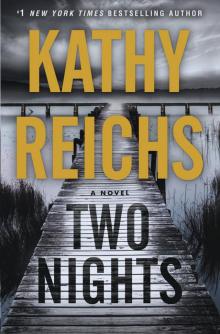 Two Nights
Two Nights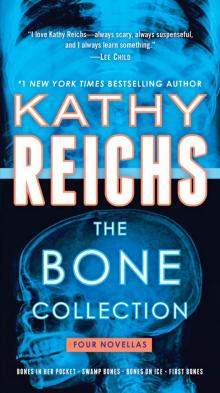 The Bone Collection: Four Novellas
The Bone Collection: Four Novellas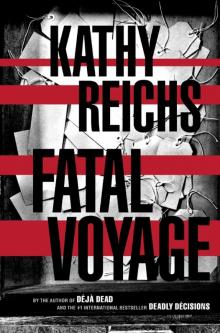 Fatal Voyage
Fatal Voyage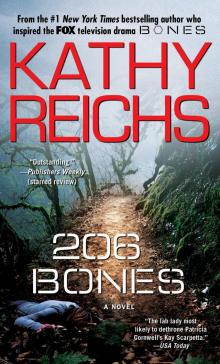 206 Bones
206 Bones Bones to Ashes
Bones to Ashes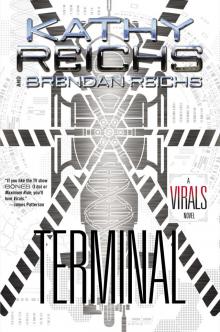 Terminal
Terminal Monday Mourning
Monday Mourning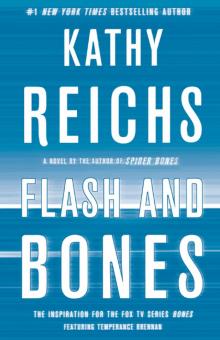 Flash and Bones
Flash and Bones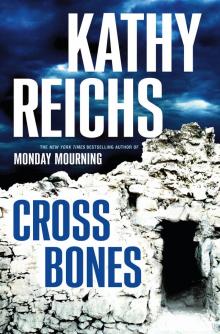 Cross Bones
Cross Bones Devil Bones
Devil Bones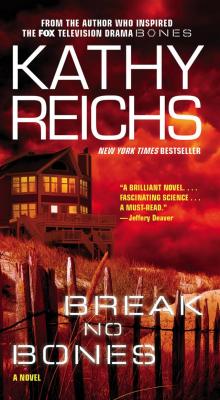 Break No Bones
Break No Bones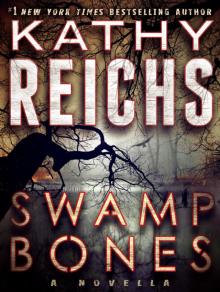 Swamp Bones
Swamp Bones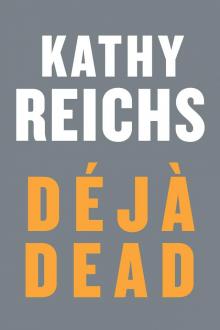 Déjà Dead
Déjà Dead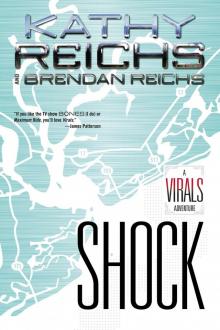 Shock
Shock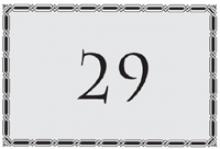 Spider Bones
Spider Bones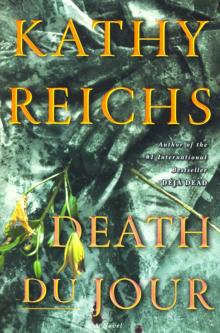 Death Du Jour
Death Du Jour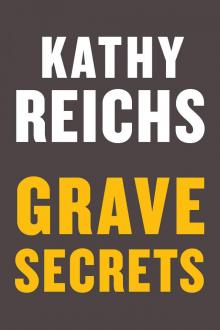 Grave Secrets
Grave Secrets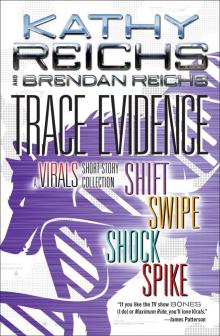 Trace Evidence: A Virals Short Story Collection
Trace Evidence: A Virals Short Story Collection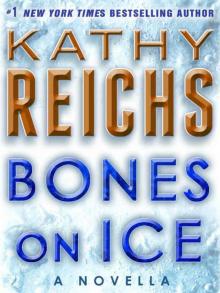 Bones on Ice
Bones on Ice The Bone Code
The Bone Code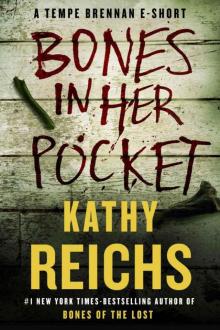 Bones in Her Pocket
Bones in Her Pocket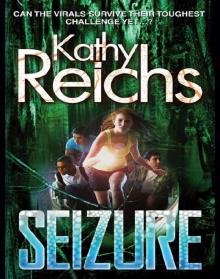 Seizure:
Seizure: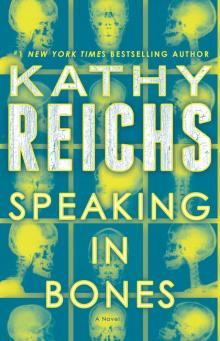 Speaking in Bones
Speaking in Bones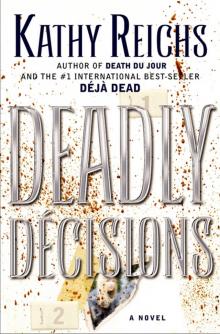 Deadly Decisions
Deadly Decisions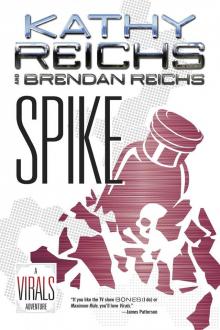 Spike
Spike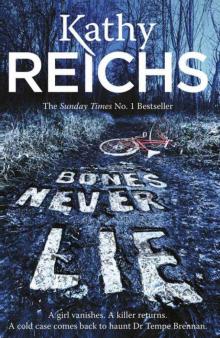 Bones Never Lie
Bones Never Lie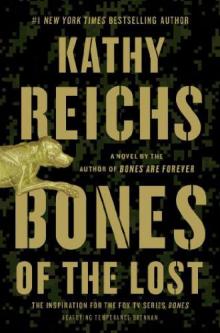 Bones of the Lost
Bones of the Lost Virals 03.5 - Swipe
Virals 03.5 - Swipe Exposure
Exposure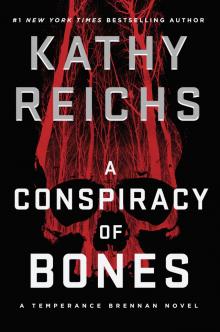 A Conspiracy of Bones
A Conspiracy of Bones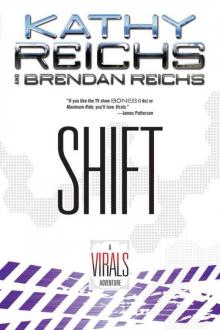 Shift (tory brennan)
Shift (tory brennan)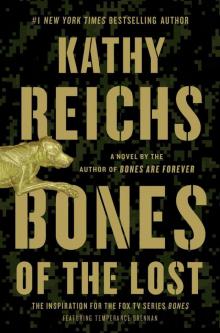 Bones of the Lost: A Temperance Brennan Novel tb-16
Bones of the Lost: A Temperance Brennan Novel tb-16 Virals tb-1
Virals tb-1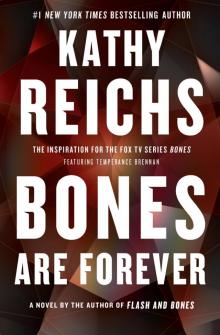 Bones Are Forever tb-15
Bones Are Forever tb-15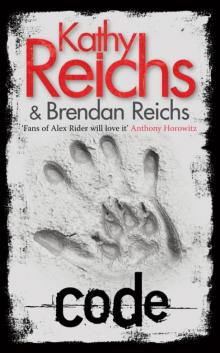 Code tb-3
Code tb-3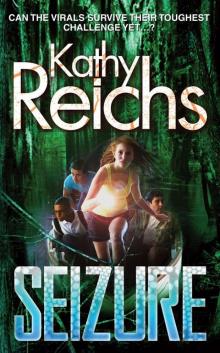 Seizure tb-2
Seizure tb-2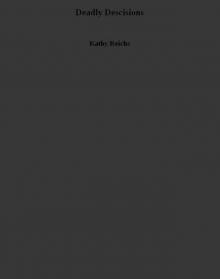 Deadly Descisions
Deadly Descisions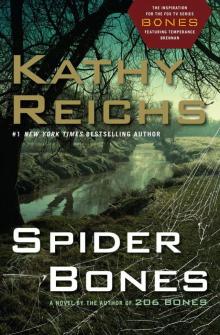 Spider Bones: A Novel
Spider Bones: A Novel